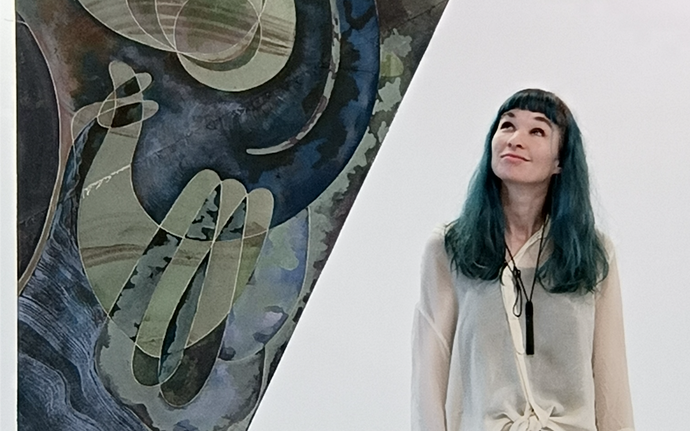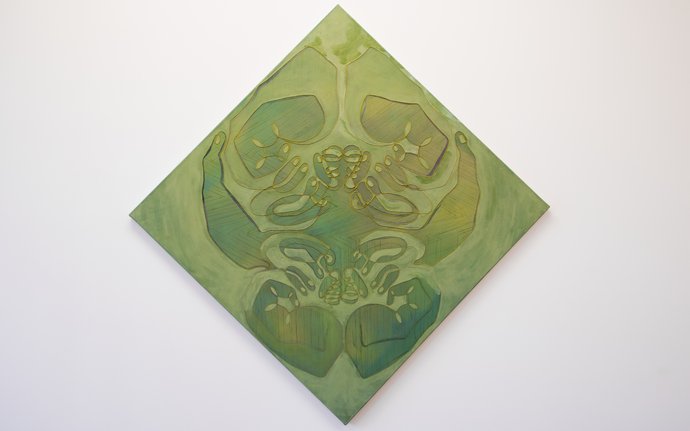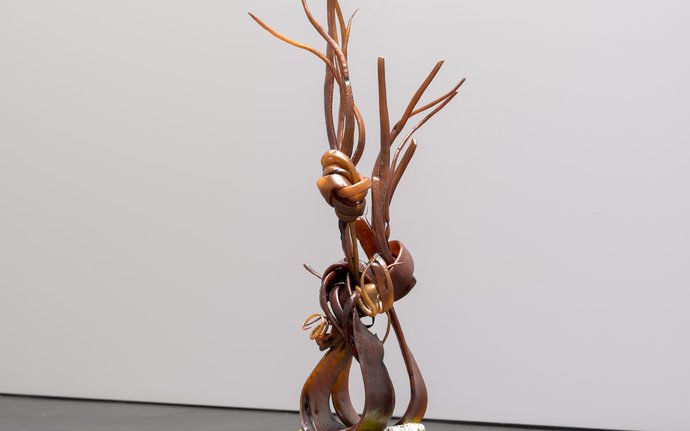Our new kaiako: meet artist Heidi Brickell
15 Feb 2024


One of our two educators, Heidi Brickell (Te Hika o Papauma, Rangitāne, Ngāi Tara, Ngāti Kahungunu, Ngāti Apakura) joined Pātaka in late 2023. She lives in Ōtaki where loves swimming in front of Kāpiti Island, “the soft dividing line of my ancestors Tara and Rangitānes’ ancient tūranga waewae”. We asked Heidi about her move south and her role as kaiako for school groups visiting Pātaka.
To be honest, I moved to this end of the motu for love. I’ve lived most of my life in Tāmaki Makaurau and was looking for a way to get here. When I saw the educator position at Pātaka advertised, I thought the job and I might just be a perfect match.
I used to be the mātauranga Māori learning specialist at Tāmaki Paenga Hira Auckland War Memorial Museum, but in between that role and moving here, I spent three months as a full-time artist. It meant I had to move in with my parents, but it was nice spending time with the whānau, knowing I’d be moving away when the right moment came.
Their exhibition Springtime is Heartbreak features one of my sculptures made of rimurapa and rākau, bound with hand-dyed cotton twine. It’s titled Wai Ata Āta Whāia – a word play on concepts of love and song; of symmetry and of pursuit. I did a knot-making wānanga there on Valentine’s Day that explored the concept of atawhai – a Māori principle of love.
Through my making, I try to connect with the indigeneity of our Māori ancestors and how they saw the world. I’m fascinated by the oral and visual languages they left behind, which are a stark contrast to the languages that dominate now. It’s my way of talking to them; making things that express a logic and sensibility that ties together both worlds. It’s intuitive and playful – a balance of pūmanawa (inherited, genetic wisdom) and mātauranga (grasping or mastery of skills and knowledge).

I’ve learnt to be upfront about how important my art is to me. If people value what you bring to a workplace, then they will support you to be the happiest and most vital you can be. Everyone reaps the rewards. I bring my Māoritanga and creativity to developing and delivering the education programmes at Pātaka.
I think more schools need to understand this in the way they treat their kaiako, so that people continue to want to do this immeasurably important job.
The Pātaka team is incredibly interesting and talented, and I feel really at home here. I’m excited about extending our arts programmes to our te reo Māori audiences, embedding more mātauranga into our programmes and developing fun learning resources to tautoko and inspire their learning.
